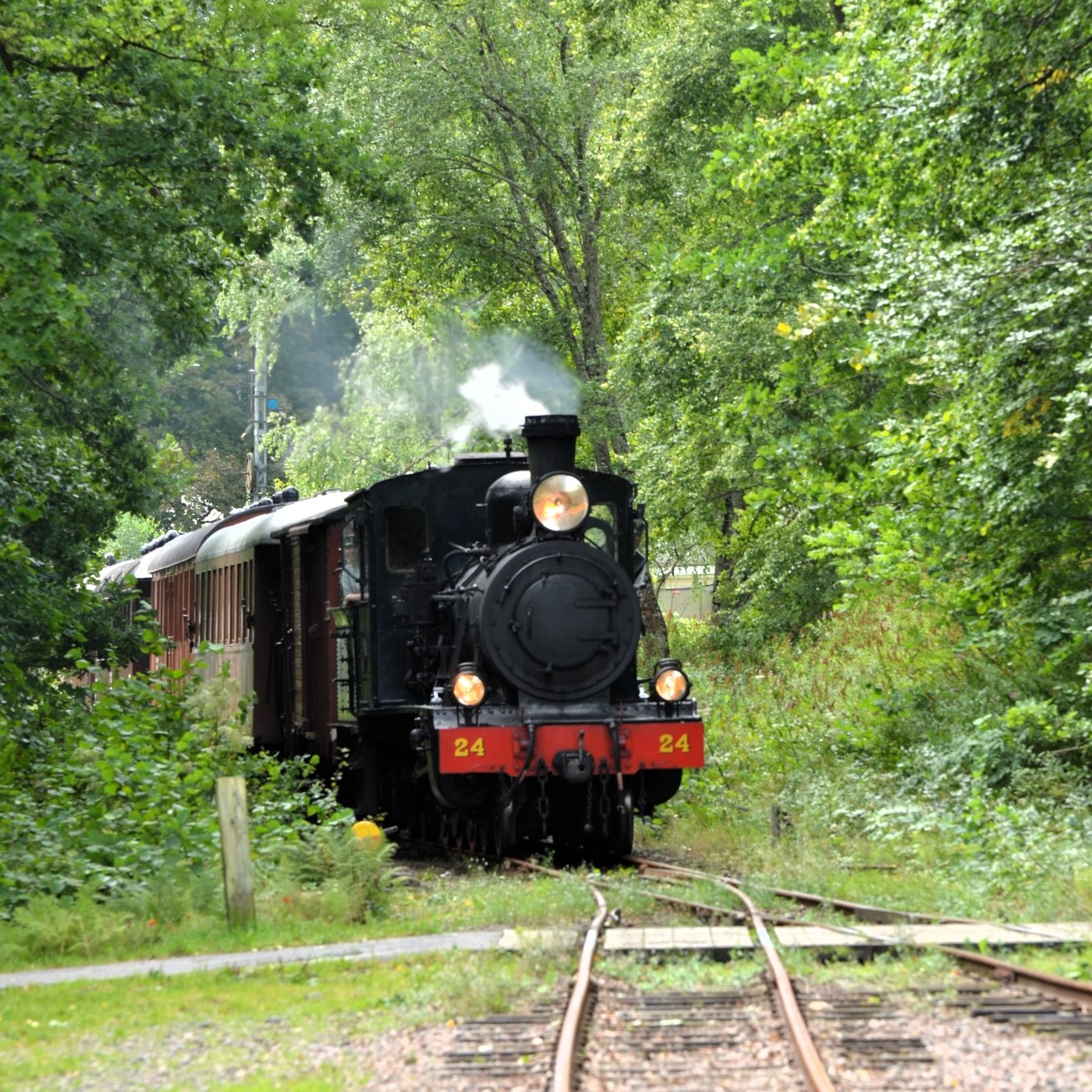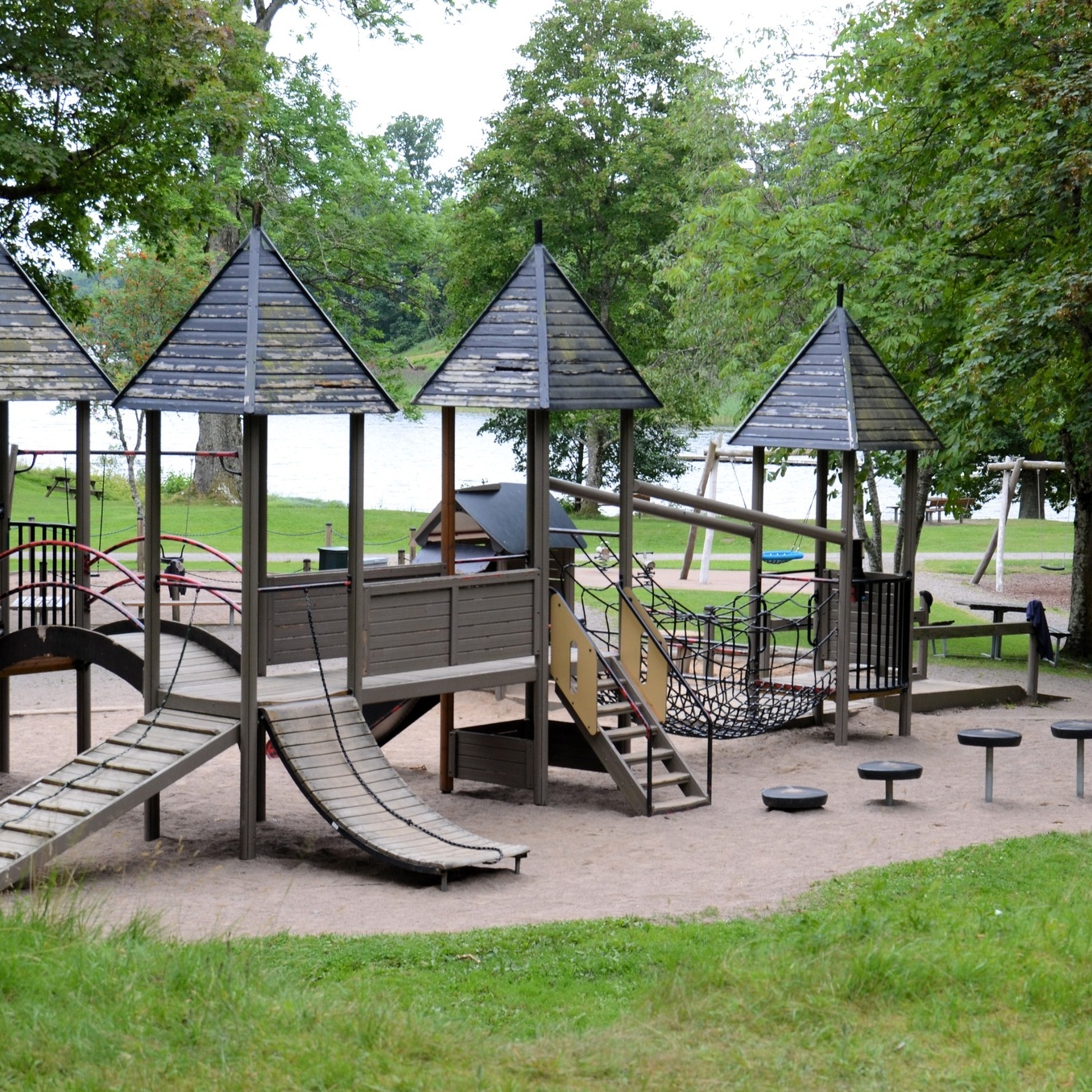




Here in Gräfsnäs Castle Park, past and present meet – nature and culture, people’s memories and new experiences. The fact that this place still exists – open and alive – is no coincidence.
It all begins in 1911, when the area is purchased by Västgöta–Göteborgs Järnväg. At the time, Gräfsnäs is the end station on one of Sweden’s most scenic railway lines.
The idea is to create an excursion destination for train travelers – with space for swimming, dancing, picnics, and celebrations.
Over time, Gräfsnäs becomes a beloved destination, where people gather to celebrate Midsummer, listen to music, and feel the presence of history among the oaks and ruins.
When the railway is nationalized in 1946, the park is donated to Erska municipality – with one clear condition: the area must remain open to the public, forever.
Years pass. The railway closes. The rails begin to rust. But in the late 1960s, a dream is revived – to let the trains run once more.
With volunteer efforts, the work begins. Spikes are hammered. Carriages are restored. Locomotives awaken from slumber. In 1970, Anten–Gräfsnäs Järnväg is inaugurated as a museum railway – a living narrow-gauge museum where steam locomotives and early 20th-century carriages once again form a link between past and present.
A place where reality outshines fiction – and the wings of history send a chill down your spine.
Photos: Solveig Areschoug Pettersson
Här kan du boka plats på Gräfsnäs Castle Park!
Eventet startar den {je_event_startdatum_event:j M} kl {je_event_startar}
{je_event_popup-teext}